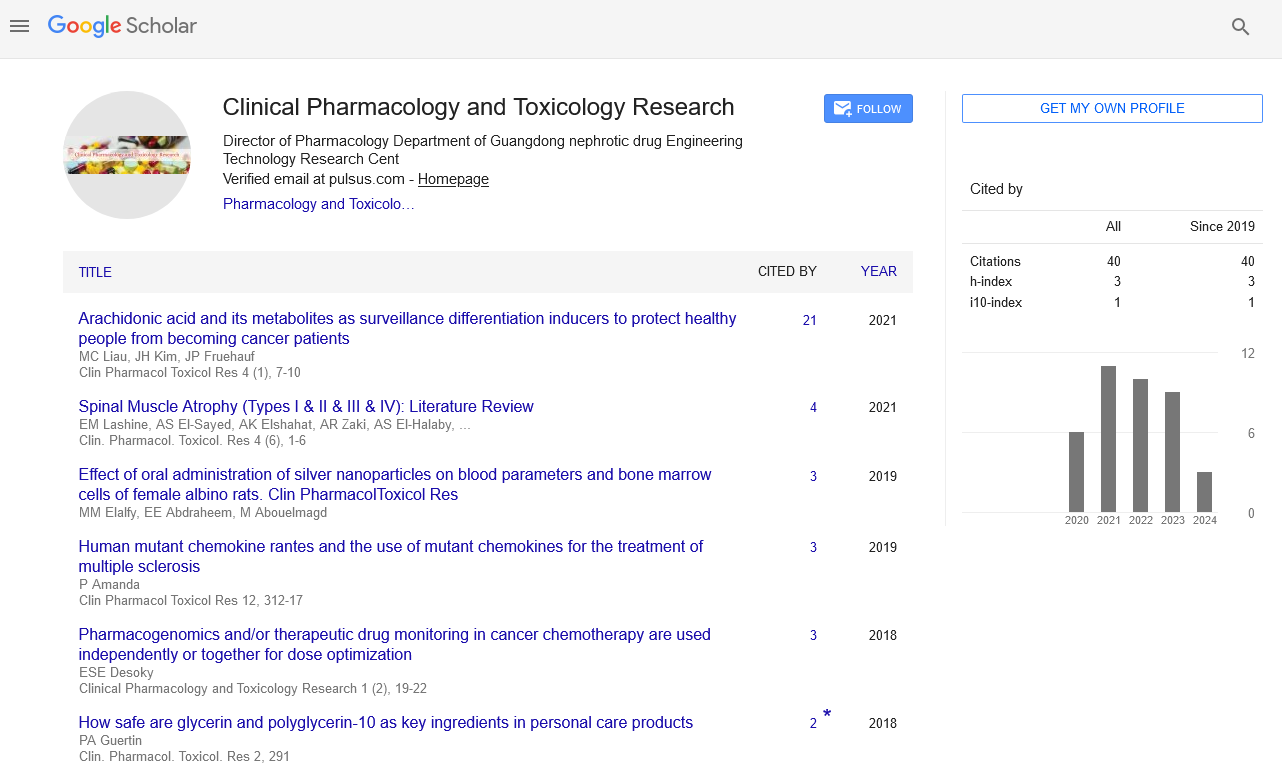To be a medicine or a toxin? this is a question – a sphingolipid story
Received: 10-Oct-2017 Accepted Date: Oct 12, 2017; Published: 14-Oct-2017
Citation: Zhang H. To be a medicine or a toxin? this is a question – a sphingolipid story. Clin Pharmacol Toxicol Res. October-2017;1(1):8.
This open-access article is distributed under the terms of the Creative Commons Attribution Non-Commercial License (CC BY-NC) (http://creativecommons.org/licenses/by-nc/4.0/), which permits reuse, distribution and reproduction of the article, provided that the original work is properly cited and the reuse is restricted to noncommercial purposes. For commercial reuse, contact reprints@pulsus.com
From being a medicine to being a toxin there is a step. This is true for many aspects: from the structure, to the effect and to the dosage. For example, myriocin (ISP-1), a potent immunosuppressant, is an analog of sphingosine, and also an inhibitor of the enzyme serine palmitoyltransferase that generates sphingosine [1]. However, when it comes to the physiological effect, myriocin inhibits the growth of a mouse cytotoxic T lymphocyte line whereas sphingosine completely suppresses the inhibitory effect [2]. But while you may think sphingosine is “good”, and that more is better, high doses of sphingosine actually start inhibiting protein kinase C activity, therefore also causing growth arrest [3]. So, from sphingosine being a “medicine” to restore growth to being a “toxin” to inhibit growth, it only needs either a minor structural modification to become myriocin, or an increase in its own concentration.
Many compounds function as a double-edged sword: on one hand, it has positive effects, but on the other hand, it also has negative effects. For example, myriocin inhibits tumor growth in murine melonoma, but it also inhibits normal cell growth [4]. Therefore, depending on the type of cell you are investigating, myriocin can be either toxin or medicine.
A similar story probably exists underlying not only in every FDAapproved medicine but also every compound under testing. Therefore, different approaches and various model systems are used to determine if a compound is a medicine or toxin, and most importantly, to understand the mechanisms through which it exerts. Given the protein conservation among different species ranging from a low organism, such as yeast, worm and fly, to a higher organism, such as mouse or monkey, the studies in model systems have turned out to be extremely useful before going to clinical trial. When worms are fed with myriocin, their offspring exhibit growth arrest, which can be rescued by supplementation of sphingosine [5,6]. The increased sphingosine levels caused by knockdown of ceramide synthease or supplementation of its inhibitor fumonish also lead to growth arrest [5]. The seemingly inhibitory effect of myriocin and of high-dose sphingosine on growth as well as the growth restoring effect of moderate sphingosine are consistent with the cell line results. Furthermore, the most fascinating part is that using C. elegans has helped us to elucidate the mechanisms on how myriocin acts as a toxin for normal cells. Myriocin inhibits growth at molecular level, due to the lack of downstream of complex sphingolipids; at cellular level, due to the interruption of cell polarity and at organ/tissue level, due to the abnormality of organogenesis [5]. Although it still needs to be investigated whether the mechanisms are applicable for other systems and human, it surely has provided some insight into this question. The data from the other systems are the same.
Eventually, after integrating all the data together, there could be a right format, a right dosage and a right condition for a toxin to become a medicine, and vice versa. Sphingolipid analogues incorporated in clinical trials are just one successful story from millions of unsuccessful ones. Many other compounds are promising in mice but unreliable in primates; many other compounds are specific and potent in vitro but poor in vivo; many other compounds that might interfere with other regulatory pathways are waiting to be discovered or created. So even though there is only a small step, it still takes a long time to transform a toxin to a medicine.
REFERENCES
- Delgado A, Casas J, Llebaria A, et al. Inhibitors of sphingolipid metabolism enzymes. Biochim Biophys Acta. 2006;1758(12):1957-77.
- Miyake Y, Kozutsumi Y, Nakamura S, et al. Serine palmitoyltransferase is the primary target of a sphingosine-like immunosuppressant, ISP-1/myriocin. Biochem Biophys Res Commun. 1995;211(2):396-403.
- Merrill AH Jr, Stevens VL. Modulation of protein kinase C and diverse cell functions by sphingosine--a pharmacologically interesting compound linking sphingolipids and signal transduction. Biochim Biophys Acta. 1989;1010(2):131-9.
- Igarashi Y. Functional roles of sphingosine, sphingosine 1-phosphate, and methylsphingosines: in regard to membrane sphingolipid signaling pathways. J Biochem. 1997;122(6):1080-7.
- Zhang H, Abraham N, Khan LA, et al. Apicobasal domain identities of expanding tubular membranes depend on glycosphingolipid biosynthesis. Nat Cell Biol. 2011;13(10):1189-201.
- Zhu H, Shen H, Sewell AK, et al. A novel sphingolipid-TORC1 pathway critically promotes postembryonic development in Caenorhabditis elegans. Elife. 2013;2(e00429).





